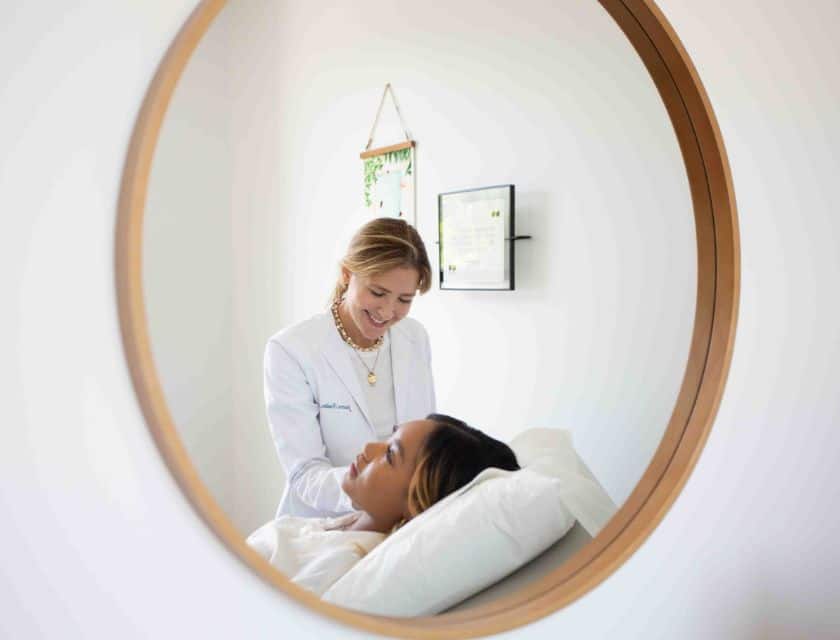Treatments
Healing from Laser Resurfacing — 3 After-Care Tips
Laser resurfacing is a great way to re-texture the skin, improve lines and wrinkles and even smooth out acne scars.

Laser resurfacing is a great way to re-texture the skin, improve lines and wrinkles and even smooth out acne scars. But it does require some downtime and a commitment to spending several days caring for your skin after the procedure. Depending on what we are treating, we can alter the depth of the resurfacing treatment. Generally, deeper resurfacing procedures can require up to two weeks of downtime, but lighter treatments and Profractional treatments require much less.
Use a dilute vinegar solution to cleanse the skin.
Immediately after laser resurfacing, your skin will be red, and may even have small areas of pinpoint bleeding. As you heal over the next few days, these areas of pinpoint bleeding will develop into small crusts as the skin repairs itself. It is so important to be gentle with your skin at this stage of the process. We recommend setting aside all of your normal skincare products for the first 48 hours and using a dilute solution made of white vinegar on your skin several times a day. Mixing together a small amount of vinegar in a larger amount of distilled water creates a solution that is antimicrobial, and will gently soften and remove the crust from your skin. You can pour some onto a clean gauze, or put it into a clean spray bottle and spray directly onto your skin, before gently patting with gauze.
About 48 hours after the resurfacing treatment, you can stop using this vinegar-based solution and begin using a gentle cleanser, like CLARA’s Clean + Calm Ultra Gentle Cleanser. After each cleanse, you should apply a protective healing ointment like Aquaphor to restore the skin’s barrier while it is healing. Once all crusting is gone you can switch back to your regular moisturizer.
Avoid the sun!
We always recommend being careful about sun exposure, but after laser resurfacing, you need to avoid the sun like it’s your job (it is). Stay indoors if possible, and if you must be outside, apply a broad-spectrum sunscreen with SPF >30. Ideally this sunscreen would be a combination of titanium dioxide and zinc oxide, which provide the most broad-spectrum protection against ultraviolet radiation, and are also the most gentle (and least irritating) ingredients to use on post-procedure skin. A sunscreen with tint also contains iron oxide, which protects the skin against damage from visible light – visible light is now known to be a major contributor to pigmentation in the skin. We formulated our Sun Shield Tinted Sunscreen to meet all of these criteria.
Remember to layer your sun protection. Wear SPF, wear a hat with a brim that shields your face, and also choose to be in the shade as much as possible. All of these measures work together to best protect your fresh, new skin from the sun’s rays.
Be patient.
Laser resurfacing has two “stages” of healing. The first stage is the most visible, immediate healing after the procedure, when your skin is red, and crusty, and sensitive. This stage lasts from a few days up to two weeks depending on the depth of the resurfacing. After this first healing stage, skin will look fresh and bright, and will feel more smooth.
The second stage of healing is the collagen and elastin regeneration phase, and this stage is not obvious when looking at the skin from the outside. Over the weeks to months following treatment, new collagen will be created and laid down in the skin, providing more support and structure, and smoothing out and filling in lines and scars. We like to see our patients back several months after laser resurfacing, at which time we can compare before and after photos and really see the difference in the skin! The results are worth the wait!
Get your customized skin care plan.
We respect your privacy and your inbox. We’ll never sell your address. Unsubscribe anytime.
© 2022 Clara Dermatology. All rights reserved.